The I Ching (The Book of Change, also spelled Yi Jing) is one of the oldest books of Ancient China. The I Ching is based on the cosmology of yin and yang, the fundamental opposite forces of the universe. These are applied to a system of divination, which you can try here online for free.
Try the old Chinese system of divination online for free. Click the header to get going, but make sure to read the instructions first, to get the most out of it. You'll be surprised at the relevance and accuracy of the I Ching answers.
The I Ching consists of 64 hexagrams, which are diagrams combining six full or broken lines, each assigned its specific meaning. Click the header to find them all explained, and how they are used in this old system of divination.
Divination with the I Ching
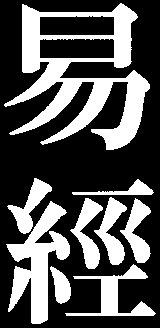
The I Ching (The Book of Change, also spelled
Yi Jing) dates back to at least 800 BC. Its content may have its origin as much as a millennium or two earlier than that. The title means
The Book of Change, and although the I Ching is a stringent text, seemingly emerged from one mind, its author is unknown to us.
The I Ching book contains 64 chapters, each devoted to one of 64 hexagrams — diagrams of six (hex is Greek for six) lines that are either solid or split in two. The 64 are simply all of the possible combinations of solid and split lines for the I Ching hexagrams. You can see all of them on the header image at the top of this column.
The I Ching book was compiled to be used for divination. The Chinese population used coins or special sticks to allow for chance to decide what hexagram would answer whatever question about the future they might have had. The text that accompanies and explains the I Ching hexagram would be the answer.
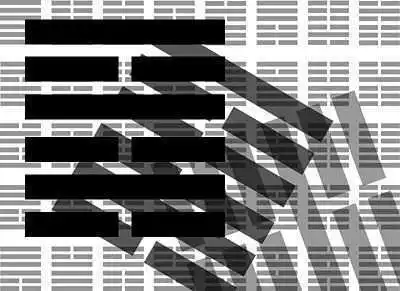
In additon to the explanation of every I Ching hexagram, there's a short text for each of the six lines. In I Ching divination, some of those lines get marked, and their texts bring additional clarifications to the question at hand. So, the I Ching hexagram gives the general idea, whereas the marked lines give some specifics.
The I Ching system of divination is still in wide use today, also far outside China. I've used it many times through the years and found it very rewarding. Contrary to many other systems of divination, the I Ching speaks through words, and so do we. That makes it surprisingly easy to apply to personal circumstances.
The Book of Change
I Ching (also spelled
Yi Jing) simply means
The Book of Change, which refers to a way of looking at the world as a whole. Everything changes, nothing stays the same — that's the only thing we can know for sure.
It's still quite true, no matter what science tries so hard to make us believe. Our understanding of the universe and our own roles in it are evolving. Well, honestly, sometimes increasing, but sometimes getting it altogether wrong. The problem is that only by time are we able to make our conclusions, and even then with the reservation of what the future of that future might reveal.
Destiny, too, is a consequence of the ceaseless change. Without change, nothing would happen. That's at the core of the I Ching. Its hexagrams imply patterns by which change occurs, and how one change leads to another.
I Ching, The Book of Change, was compiled around 800 BC. It started to be discussed in the Western world in the beginning of the 18th century, and the first translation was into Latin in the 1730s. There have been several translations of the old I Ching classic into English. Click the header for my presentation of the most important ones and my reviews of them.
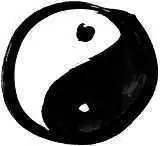
According to the I Ching, the ceaseless change is caused by the dynamics between yin and yang, the polarities of ancient Chinese cosmology. Yang stands for heaven and Yin for earth. Light and dark, warm and cold, and so on. Anything in the universe bascially consists of these opposites, and the balance or imbalance between them. You can read more about yin and yang of the I Ching by clicking the header.
In the I Ching, yin and yang are represented in a very basic way, by a line that's either solid or broken. The solid line represents yang, and the broken one yin:

Yang line.

Yin line.
In the I Ching, these lines are combined into eight trigrams (three lines each), which are then combined into the 64 possible hexagrams. Here are the eight I Ching trigrams:
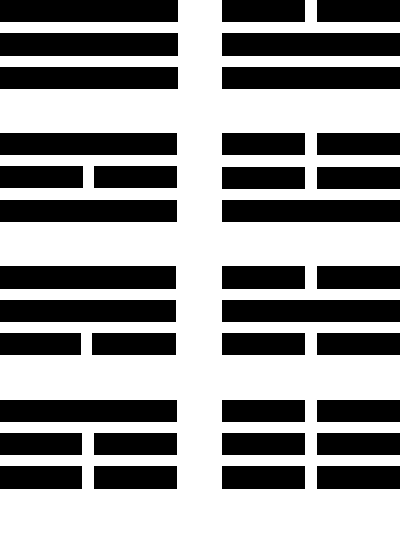
The eight trigrams.
The trigrams of the I Ching represent eight basic forces of nature. By themselves they are at rest, but combined with another basic force — in a hexagram — they cause change according to the characteristics of their combined forces. You can read more about the I Ching trigrams by clicking on the header above.
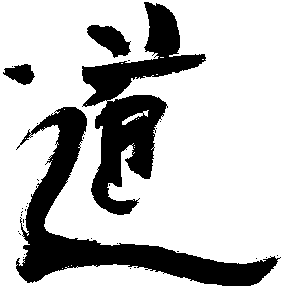
I've seen on the Internet that nowadays, the I Ching is claimed to be linked to Taoism, as if springing from that line of thought. It's not very accurate. The I Ching is much older than we know Taoism to be, and it's still not even referred to in the major Taoist classic,
Tao Te Ching.
True, Taoism makes use of yin and yang in its cosmology, regarding them as primary powers in the very birth of the universe and onwards. But so did just about every other Chinese philosophy of the time and long before it. No, the I Ching is an entity that had been around for very long when Taoism was put into words.
Actually, the traditional philosophical Taoists would probably object to the I Ching idea of a predictable destiny, at least by principles different in essence from that of Tao, the Way, itself. They preferred a surprising future, to which the only safe direction would be remaining on the Way, no matter what.
You can read more about Taoism and its classics by clicking the header, taking you to my website about Taoism.
Divination
Today, just about every educated person would sneer at divination and claim that there is no way to predict the future. That may be hasty, since so many things about our universe are quite predictable — even the mightiest of them all: the movements of the heavenly bodies.
I started experimenting with different techniques of divination when I was quite young — and just as doubtful. I Tried the I Ching, the Tarot deck, astrology, the Ouija board, experimented with hypnosis, and so on. What I experienced struck hard on my doubts. I found the future not only foreseeable, be it in a symbolic way sometimes difficult to interpret, but very easily accessible. The future opened its bosom readily, like a lover.
Most divination techniques involve chance — pure randomness. That's true for the I Ching as well, where you flip coins or throw sticks to get your hexagram. And chance is the greatest enigma of them all.
In a universe bound by laws of nature, chance can't exist. It's nothing but the limit of our knowledge of how the world works. If we have the formulas, we should be able to compute the future. Paradoxically, methods of chance, such as the I Ching, seem to penetrate areas of the future that our formulas don't, as if the essential law of the cosmos is founded on chance. Well, quantum physics seems to be heading towards such an understanding of the universe.
Anyway, among the divination techniques, I've found the I Ching to be one of the most rewarding. I guess it's because the I Ching speaks with words, like our whole species prefers to do. That makes its predictions accessible and surprisingly obvious to us. If you've tried the I Ching, I'm sure you agree.
Oh, one more thing: Although the future is so easily accessible by the I Ching and many other divination methods, there's one occasion in which they all fail: They will not tell us what we should do to fulfill our personal quests or to find our own answers to that tremendously elusive question about the meaning of life. They refuse to. That, we have to find out for ourselves, each and every one of us. Why not? That's what makes life such a fascinating journey.
© Stefan Stenudd
Use the Facebook field on some of these web pages to comment the I Ching or this website.
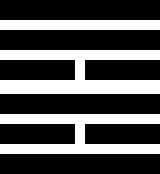

 The I Ching (The Book of Change, also spelled Yi Jing) dates back to at least 800 BC. Its content may have its origin as much as a millennium or two earlier than that. The title means The Book of Change, and although the I Ching is a stringent text, seemingly emerged from one mind, its author is unknown to us.
The I Ching (The Book of Change, also spelled Yi Jing) dates back to at least 800 BC. Its content may have its origin as much as a millennium or two earlier than that. The title means The Book of Change, and although the I Ching is a stringent text, seemingly emerged from one mind, its author is unknown to us.
 According to the I Ching, the ceaseless change is caused by the dynamics between yin and yang, the polarities of ancient Chinese cosmology. Yang stands for heaven and Yin for earth. Light and dark, warm and cold, and so on. Anything in the universe bascially consists of these opposites, and the balance or imbalance between them. You can read more about yin and yang of the I Ching by clicking the header.
According to the I Ching, the ceaseless change is caused by the dynamics between yin and yang, the polarities of ancient Chinese cosmology. Yang stands for heaven and Yin for earth. Light and dark, warm and cold, and so on. Anything in the universe bascially consists of these opposites, and the balance or imbalance between them. You can read more about yin and yang of the I Ching by clicking the header.


 I've seen on the Internet that nowadays, the I Ching is claimed to be linked to Taoism, as if springing from that line of thought. It's not very accurate. The I Ching is much older than we know Taoism to be, and it's still not even referred to in the major Taoist classic, Tao Te Ching.
I've seen on the Internet that nowadays, the I Ching is claimed to be linked to Taoism, as if springing from that line of thought. It's not very accurate. The I Ching is much older than we know Taoism to be, and it's still not even referred to in the major Taoist classic, Tao Te Ching.

